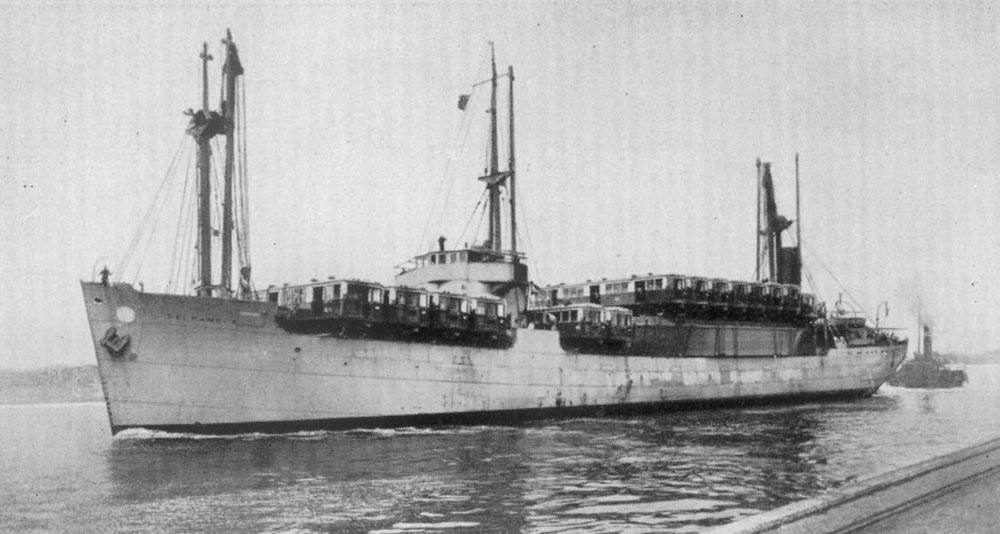
During 1928 Armstrong Whitworth delivered two specialty ships to Belships, Norway. The company had been established in 1918 by Christen Smith, but was immediately challenged by the general state of the shipping business, enough to cause the Belship company to seek out some sort of a niche in the business. Their research led them to focus on the movement of railway locomotives and other rolling stock from the industrial centers of Europe and the USA to all parts of the world. These heavy lift ships were equipped with heavy cranes for use in poorly equipped ports. They were also used to transport unusual items such as small lightships, buoys and bulky equipment for the oil industry
The ships were fitted with two large cargo holds with the cargo hatches specially arranged for the handling of locomotives and rolling stock. A horizontal direct acting steam windlass capable of working a bower cable and bower anchors was fitted on the forecastle head. Six winches were fitted, four on the upper deck, and two on the poop for general cargo, also a warping capstan on the poop, and additionally two electric winches for heavy lift in the fore end of the poop. The vessel is fitted with six 5 ton, one 30 ton, and one 100 ton derricks.
![]()
Belpamela
The Belpamela was the first of the pair to be delivered - during February 1928 from Armstrong Whitworth Co Ltd, Newcastle upon Tyne (order number 1028?) to Rederiet Belmoira A/S (Christen Smith), Oslo.
During January 1929 the Belpamela was noted in the Suez Canal with about a dozen sleeping cars for the Egyptian State Railways.
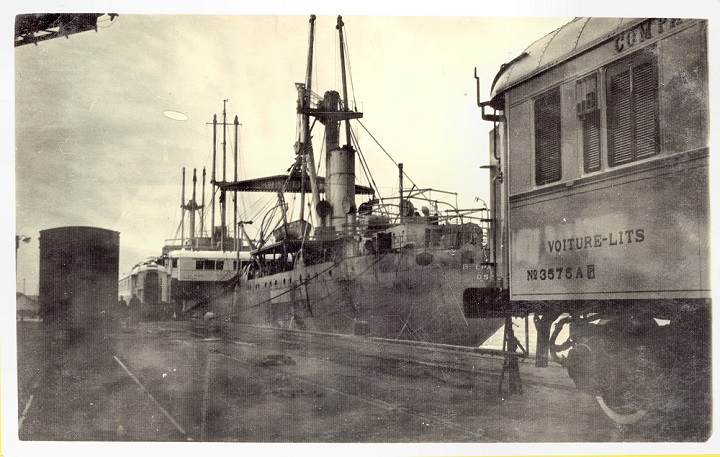
Because of the unusual, and highly visible cargos carried by these two ships, they drew the attention of the media, including printed papers/magazines and movie newsreels. This coverage provided more visibility to these vessels than the average cargo ship of these times. During February 1930 the Belpamela worked a Liverpool - India sailing loaded with sixteen steam locomotives (each weighing 90 tons), nine tenders, a seaplane carrier and a 220 ton lightship bound for the Persian Gulf.
Also during the latter half of 1930 the Belpamela worked a shipment to South America (see image above). The cargo consisted of twenty two electric subway coaches for the Buenos Ayres Central Terminal Railway Company and two large steel barges.
On May 31st 1931 Belpamela was noted at an unknown port loading?? at least six South Indian Railway Class YD 2-8-0 steam locomotives.
On May 26th 1934 the Belpamela negotiated the Panama Canal whilst en-route from Baltimore, MD to Los Angeles, CA in ballast.
On December 2nd 1934 the Belpamela negotiated the Panama Canal whilst en-route from Philadelphia, PA to Valparaiso, Chile with 1,937 tons of railway materials.
On March 1st/2nd 1935 the Belpamela negotiated the Panama Canal whilst en-route from Victoria, BC Canada to Grimsby with 4,300 tons of lumber.
On July 1st/2nd 1935 the Belpamela negotiated the Panama Canal whilst en-route from Charleston, SC to Pto Arm'les RP with 4,062 tons of steel rails.
On July 15th 1935 the Belpamela negotiated the Panama Canal whilst en-route from Pto. Arm'les to Cuba in ballast.
On September 24th 1935 the Belpamela negotiated the Panama Canal whilst en-route from Castilla, Honduras to Taltal, Chile in ballast.
On October 25th/26th 1935 the Belpamela negotiated the Panama Canal whilst en-route from Taltal, Chile to the Azores with 4,203 tons of nitrates.
Transferred to Skips-A/S, Belships Co. Ltd. (Christen Smith), Oslo in October 1935.
During December 1935 the Gaumont British Newsreel recorded the Belpamela loaded at Birkenhead with steam locomotives bound for China. In January 1937 a 120 ton lightship was hoisted aboard the Belpamela at Woolwich, England bound for Rangoon, Burma. During December 1938 a shipment of 105 foot long oil towers weighing 100 tons were delivered from London to the Persian Gulf, the load was laid flat across the width of the deck, with an 18 foot overlap on either side.
During February 1939 the Belpamela was used to transport the Coronation Scot exhibition train from the United Kingdom to Baltimore, United States. The train was received at Southampton for loading onto the ship, the locomotive was placed in a hold, the passenger coaches remained on deck. Arrival was at Baltimore, Maryland on February 21st 1939. Supporting the train whilst in the United States were driver Fred Bishop, fireman John McKinnon Carswell and Crewe Works foreman & master mechanic Frederick A Soden.
On or about March 1st 1940 the Belpamela and the Lagaholm (the latter en-route from Baltimore to Malmo with mixed cargo) were ordered by the British armed boarding vessels HMS Northern Sky and HMS Northern Princess to proceed to Kirkwall for contraband inspection. In the early morning hours of the next day, March 2nd 1940 the Belpamela was attacked by the U-32, fortunately all three torpedoes detonated prematurely. In a second attack at about 7.15am, this time on the Lagaholm, the U-32 stopped the ship and used the deck gun to sink the vessel after the crew had taken to the lifeboats. The crew were rescued by the Belpamela and taken to Kirkwall & North Ronaldsay.
From July 12th 1940 the Belpamela came under German control.
On April 2nd 1945 rocket equipped Mosquitos from the Banff Strike Wing in Scotland attacked a number of ships at Framnæs Mekaniske Værksted (Sandefjord) leading to the sinking of the Concordia and the William Blumer. Damaged in the attack were the Hektor, Shios Espana, Kattegat and the Belpamela. Following the attack the damaged Belpamela was towed from Sandefjord to Oslo for repair. Whilst here the ship became the subject of a plot to sabotage the ship, plastic explosives were used to cause enough damage to keep the ship out of service for the remainder of the war.
After the war the Belpamela was repaired and continued in its pre-war role of transporting railway equipment across the oceans. In particular the American & Canadian locomotive manufacturers filled orders to supply France with 1,340 type 141R Mikados for the SNCF to assist in replacing their seriously depleted locomotive fleet. During the second week of April 1947 the Belpamela started out across the Atlantic (New York - Cherbourg) with sixteen locomotives built by the Montreal Locomotive Works bound for France. These were numbered 1220 - 1235. However off the coast of Newfoundland the ship encountered heavy weather and foundered (perhaps from the cargo shifting), becoming a total loss, nine crew members died. The ship sank at position 37.44N/53.03W.
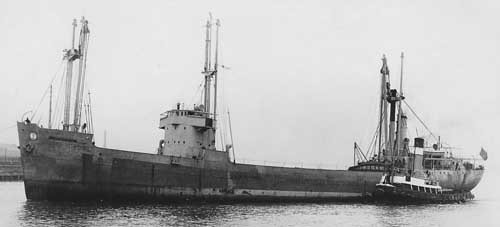
![]()
Belmoira
The Belmoira was launched on October 12th 1927, with the launching ceremony performed by Lady Chichester The Belmoira was delivered during February 1928 as number 1027 from Sir W. G. Armstrong Whitworth & Co. Ltd, Newcastle upon Tyne to Rederiet Belmoira A/S (Christen Smith & Co.), Oslo.
Sometime during 1928 the Belmoira sailed from Dunkirk to Alexandria, Egypt for the offloading of at least twenty new passenger coaches. Four steam locomotives were also on deck.
The Belmoira left Port Talbot on September 15th 1928 bound for Australia. Colon was reached on October 4th 1928 and whilst transiting through the Panama Canal the ship hit a bank requiring minor repairs. The Belmoira reached Port Kembla during November 1928. The ship was carrying 4,074 tons of steelwork and machinery following the purchase of a rolling mill plant by Australian Iron & Steel Ltd from Baldwins Ltd of the United Kingdom. The ship carried pieces that weight 50 tons each and were 120 feet long, allowing for quicker erection of the plant. A further shipment would be made by the Belpamela, expected to arrive in Australia during March 1929.
December 1928 (3rd week) - noted Fremantle.
January 30th 1929 - at Las Palmas.
June 13th 1929 - departed Melbourne for Calloa?
The Belmoira, like her sister ship frequently featured in the media due to the unusual and dramatic cargoes that she carried. However early in her career the ship became a means of rescue for three trans-Atlantic aviators (Christian Johanssen, Willy Rody & Fernando Da Costa Viega). On a flight starting on September 13th 1931 from Lisbon to New York their Junkers aeroplane developed engine trouble about 400 miles from Halifax and crashed into the North Atlantic. Heavy weather had been encountered shortly after passing the Azores. The plane climbed to 10,000 feet to avoid the storm but suffered from icing and had to descend due to the air speed indicator freezing up. The engine also started to miss, but settled down providing full throttle was not demanded. On September 14th the plane circled the Pennland when about 400 miles east of Halifax, after that nothing further was heard of the flight.Two hours and twenty minutes after passing the Pennland and whilst dealing with strong headwinds the plane ran out of fuel. The ocean landing caused minimal damage to the plane, though the rough seas started to cause parts of the plane to fall off. The seas became calmer and the remants of the plane provided flotation for about six days before being picked up on September 21st 1931 by the Belmoira about 80 miles of Cape Race. The Belmoira was enroute to Russia with steam locomotives under the command of Captain Hald. The three rescued aviators were transferred to the New York bound Stavangerfjord then next.
During March (and or July?) 1935 the Belmoira was noted on the Thames at Charlton having the lightship Bahrim hoisted on to her deck.
From October 1935 ownership was transferred to Skibs-A/S, Belships Co. Ltd. (Christen Smith), Oslo.
On March 1st 1936 the Belmoira negotiated the Panama Canal whilst en-route from Dairen, China to Karlshamn, Sweden with 4,013 tons of soy beans.
On January 31st 1938 the Belmoira was observed on the Delaware River carrying twenty USA built locomotives bound for China (ten from the Baldwin Works at Eddystone, Pennsylvania and ten from the American Locomotive Works at Schenectady, New York) for delivery to Hong Kong.
During June 1940 the deteriorating situation in France (Paris occupied June 14th 1940, Armistice signed June 22nd 1940, to be effective June 25th 1940) followed by the establishment of the Vichy Government put at risk any ships in French ports bound for Allied destinations. Detained crews would initially be interned, being later given the options to remain with the ship unless it was commandeered by the Vichy French, internment on land or return to Norway. Twenty six Norwegian ships would be interned in North and West African ports, with most crews opting for local internment. In this unsettled situation the Belmoira was located at the French colonial port of Dakar, her final voyage commenced, perhaps with some urgency on June 18th 1940, under the command of Capt Morten Mortensen, sailing from Dakar in ballast for Southampton (or from Rifisque to Avonmouth in ballast). Data from the 'convoyweb' website indicates the Belmoira was part of convoy SL 36, departing Freetown on June 15th 1940 and arriving Liverpool on July 3rd 1940). The journey was uneventful until early in the morning of June 30th 1940 when torpedoes fired by U-26 found their mark, sinking the unarmed ship about 250 miles south-west of Lands End, approximate position 48 15N 10 30W. The torpedoes hit the starboard side midships leading to a large explosion. The crew had been on alert due to an earlier sighting of what was believed to be a U-boat, this readiness allowed the safe evacuation of all 25 crew to the lifeboats. The ship eventually broke in two and sank, the U-boat questioned the survivors and then departed.
The survivors then set sail in a northeasterly direction, crossing the path of the British vessel Sheridan bound for Brazil. Not wishing to visit Brazil the Belmoira's crew remained in the lifeboats with the understanding that two nearby Spanish trawlers had been notified of their position. They were picked up later that day about 300 miles from La Coruña, Spain and reached there on July 2nd 1940.
Ironically the day after the sinking of the Belmoira, the crew of the U-26 were also forced to abandon ship, they had attacked a convoy (OA 75?) and sustained depth charge damage from escorts HMS Gladiolus and HMS Rochester. They tried to flee on the surface but were located by a 10 Squadron Sunderland (RAAF) of 15 Group Coastal Command which dropped two loads of four bombs. With the arrival of HMS Rochester the U-boat was scuttled.
Basic Details
Built: Armstrong Whitworth & Co Ltd, Newcastle
Resources: National Archives of Norway.
Page added March 21st 2010
Return to Ship menu
Tonnage: 3215 gt, 1869 net, 4518 tdwt
Length overall: 340 ft 9in
Length between perpendiculars: 325 ft
Breadth, moulded: 49 ft
Depth moulded to upper deck: 23ft 6in feet
Mean draught: 19ft 9in
Propulsion: One four cylinder single acting 4S60 1,350hp Sulzer engine at 110rpm
Auxiliary Engines: Two Weir-Sulzer 150hp engines at 325rpm
Screws: 1
Speed: 10.75 knots
Newspaper article Willy Rody.
Panama Canal Record (Isthmian Canal Commission).
Armstrong Whitworth Record Autumn 1930.![]()
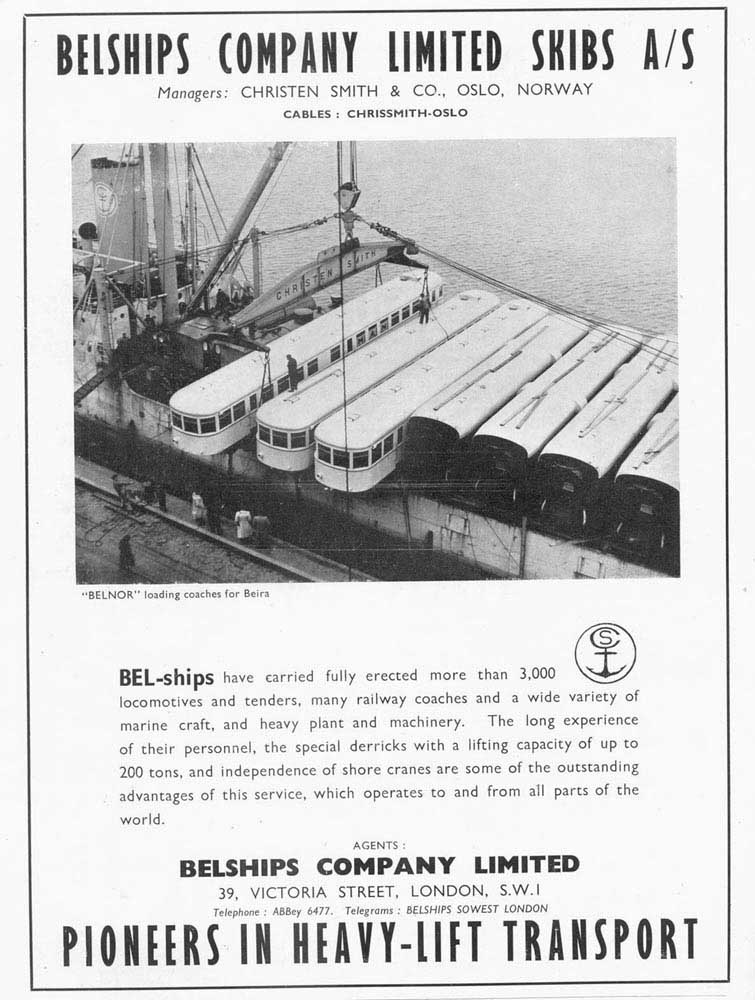
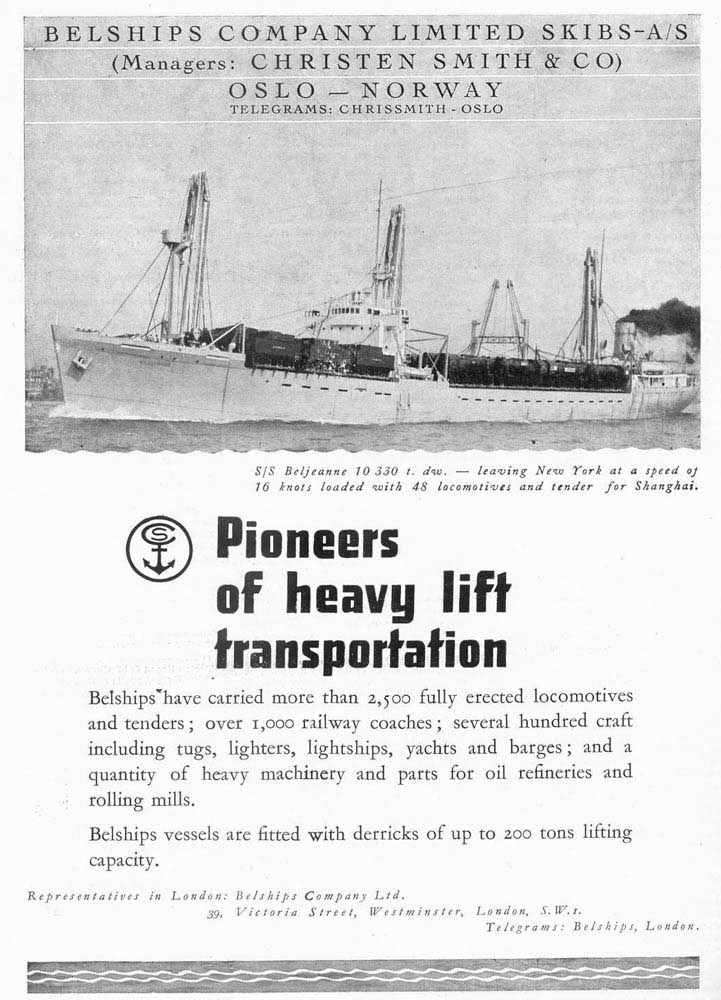
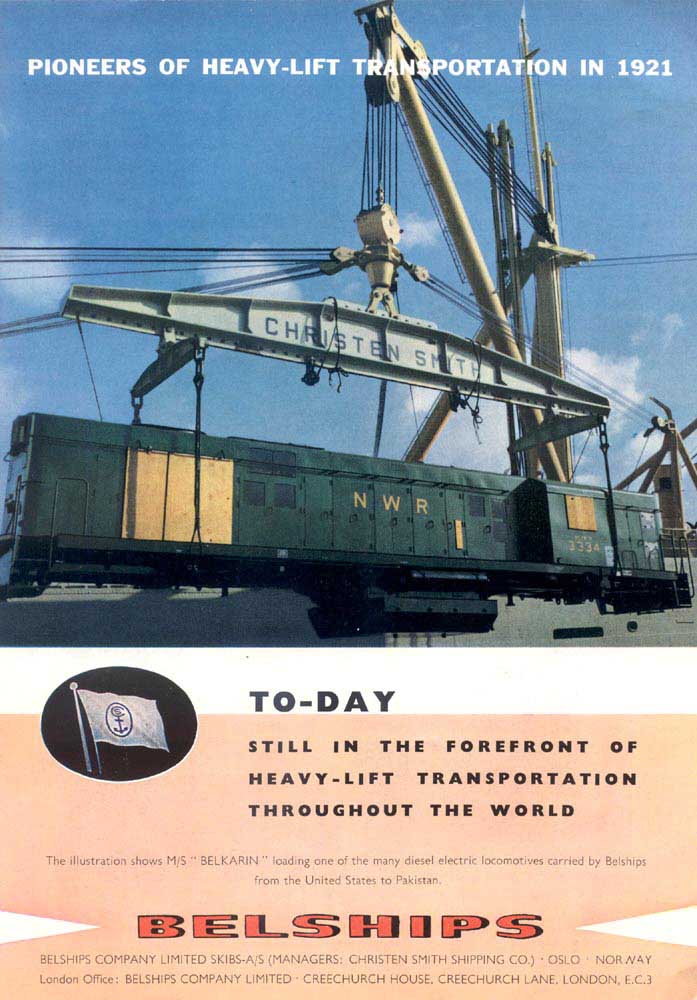
![]()
Last updated January 26th 2023
Return to site menu